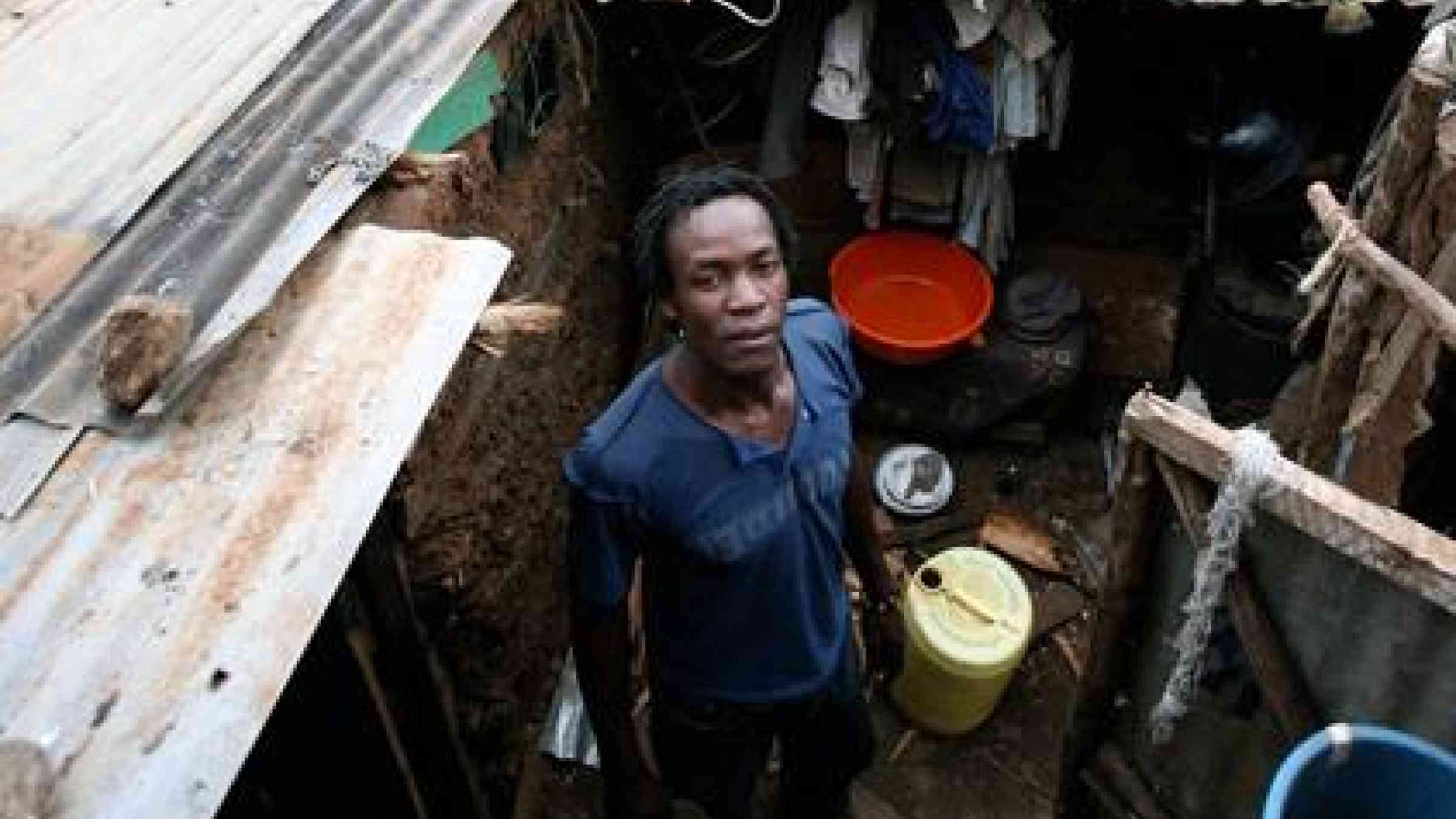Managing urban risk in Africa

A man stands in front of his dwelling in Nairobi’s Kibera slums. (Photo: David Gough/ IRIN)
NAIROBI, 21 May 2015 – Urban planning is a key element in disaster risk preparedness and community resilience in Africa, say experts.
Africa is an urbanization hotspot, with 56% of its people predicted to live in urban environments by 2050, up from 40% in 2014, according to the United Nations, which will put the issue sharply in focus at a global conference next year.
While urbanization goes hand-in-hand with development, it is often a driver of risk especially in least developed and low-income countries. Population growth and increased migration from rural to urban areas, due to poverty and lack of opportunity, is causing a proliferation of unplanned, risk-prone settlements in Africa.
“Sustainable cities are a key component for attaining resilience,” noted Ms. Aisa Kirabo, the Deputy Executive Director and Assistant Secretary-General of UN-Habitat, the international body focused on human settlements.
Ms. Kirabo spoke at a recent UNISDR-moderated event on the role of cities and local governments in building resilience, held in the Kenyan capital Nairobi during the second session of the Preparatory Committee for Habitat llI – the UN Conference on Housing and Sustainable Urban Development scheduled for October 2016.
“As we respond to disasters, we need to build back better to enhance urban planning and security of tenure,” said Ms. Kirabo.
Highlighting the significance of UN-Habitat’s commitment to the Sendai Framework for Disaster Risk Reduction – the 2015-2030 global roadmap adopted by the international community in March at the World Conference on Disaster Risk Reduction – she cited stronger land use mechanisms and access to finance for local authorities. She underlined that two of the framework’s four priorities, strengthening disaster risk governance and investing in disaster risk reduction, are clearly key to resilient cities.
In a statement delivered on her behalf at the Preparatory Committee, UNISDR’s head Margareta Wahlström noted that the Sendai Framework “recognizes the significance of a rapidly urbanizing planet, and highlights the need to enhance urban resilience.”
UN-Habitat’s Kirabo, who from 2006-2011 was mayor of Rwandan capital Kigali, added that UN-Habitat will, alongside partners such as the network for Local Governments for Sustainability (ICLEI), the World Bank and UNISDR, continue to promote urban resilience.
Yunus Arikan, Head of Global Policy and Advocacy at ICLEI, lauded the Sendai Framework for recognizing the central role of local authorities and the need for national governments “to empower local authorities and local communities to reduce disaster risk, including through resources, incentives and decision-making responsibilities, as appropriate.”
At another UNISDR-convened event on the Sendai Framework and urban resilience in the post-2015 world, held during a session of UN-Habitat’s Governing Council, Mr. Aldo Biondi, Regional Director of ECHO, the European Commission’s humanitarian arm, underscored the need to avoid transferring risk from rural to urban settings. He recommended that the underlying causes of disaster risk, extreme poverty and destitution be addressed, and that the right balance be struck between growth and investment.
That investment is central to reducing urban risk is clear. UNISDR’s 2015 Global Assessment Report projected that an investment of US$6 billion annually in disaster risk reduction would result in avoided losses of US$360 billion over the next 15 years. The Sendai Framework offers guidance to achieving significant disaster losses, not least in urban centres.
According to UN-Habitat, the Sendai Framework is a “vital element” to ensure safe and resilient cities in the future. Like its 2005-2015 predecessor, the Hyogo Framework for Action, it clearly flags the links between strategic settlement planning, development and management, with a focus on the poor and human rights, as well as the promotion of sustainable use and management of ecosystems.
Explore further
Also featured on
Is this page useful?
Yes No Report an issue on this pageThank you. If you have 2 minutes, we would benefit from additional feedback (link opens in a new window).